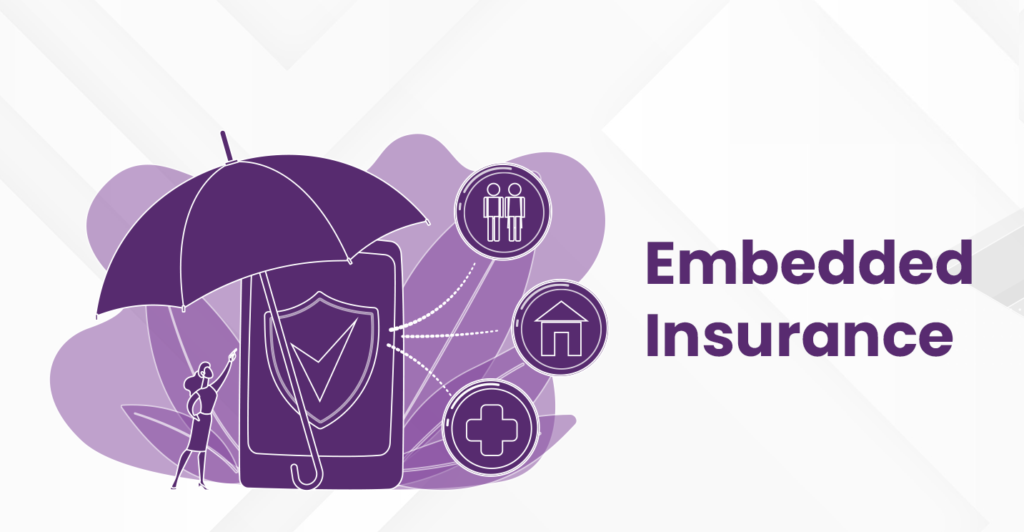Source: Agentsync
How does embedded insurance work?
Embedded insurance, also known as built-in insurance, is typically offered in two ways. Customers can either choose to purchase an insurance policy at the same time as a product, or the insurance is truly embedded and already included in the total cost of the product.
You’ve probably seen embedded insurance before. Think about the last time you bought an airplane or concert ticket. You were likely asked at some point in the purchasing process if you would like to insure your ticket purchase for an additional fee. This is a common example of embedded insurance that the customer can opt in or out of. Sometimes, you’ll only get the chance to buy this kind of insurance at the original purchase; other times you might get the option to buy it later if you didn’t do so originally.
Embedded insurance works because it catches the customer at the time when they’re most concerned with protecting their purchase. It’s kind of like asking “do you want fries with that?” when someone is already ordering a cheeseburger. It’s a relatively small additional charge that feels like a big benefit.
Embedded insurance is on the rise
Embedded insurance isn’t an entirely new concept; built-in insurance has been around for quite some time now. But, with high-profile companies (like Ford, Amazon, and Tesla) rolling out new embedded insurance products, it’s becoming quite the hot topic in the insurance industry.
And it looks like embedded insurance is one trend that’s here to stay. Thanks to customer demand and an increase in technological capabilities, embedded insurance is on the uptick with the U.S. market value projected to reach over $70 billion in the next couple of years. And, as Ford has modeled in its partnership with Pie Insurance, embedded insurance is no longer only for individuals. It also has a place in the commercial insurance space.
As the embedded insurance market continues to grow, carriers and MGAs who are willing to invest their time and resources into embedded insurance policies will likely reap future success.
While embedded insurance can help provide a seamless purchasing process for insurance consumers, AgentSync can do the same by removing roadblocks at your agency, carrier, or MGA/MGU. To learn more, check out AgentSync today.
Could embedded insurance be the answer to the widening protection gap?
One area in which embedded insurance could have a great impact is the global insurance protection gap. The protection gap is a term for the difference between the value of insurable property and the amount of insurance protection people have on that property. This protection gap is a problem because it leaves so much property uninsured, which means individuals and businesses are responsible for the entire cost when disaster strikes. The protection gap can also apply to health and life insurance, but is most commonly used to refer to a lack of property and casualty insurance.
Limitations and drawbacks of embedded insurance
While embedded insurance certainly seems like the way of the future, it’s not without a couple of key limitations. One of the main ones is that not all kinds of insurance products can be embedded, at least currently. To make the convenient purchasing process work, embedded insurance products must be relatively simple, transparent, and come with a straightforward claims process.
Without a licensed insurance producer involved, it’s on the carrier selling the product to fully educate the consumer about what they’re buying and how it works. Distributors who want to offer embedded insurance have to find a balance between convenience and compliance. Offering a low-touch purchasing process while also ensuring they’re meeting legal and regulatory requirements is a challenge that won’t be easy when it comes to new and more complex risks. That’s why, for now, embedded products tend to be relatively low-cost policies that cover something very specific, like a vacation.
Along the same lines, another drawback of embedded insurance is that the consumer doesn’t have a local, friendly face to ask questions to or seek advice from. While some people prefer to make purchases (including insurance) with as little human interaction as possible, many still prefer a human touch. The absence of that touchpoint may lead customers to decline embedded insurance offerings and instead call up their agent to ask about a similar policy. In this way, embedded insurance is doing a great service to agents by bringing awareness to clients that they may need insurance for something they wouldn’t have thought of on their own.
Read full article: https://agentsync.io/blog/insurance-101/embedded-insurance-a-growing-trend-transforming-the-insurance-industry



